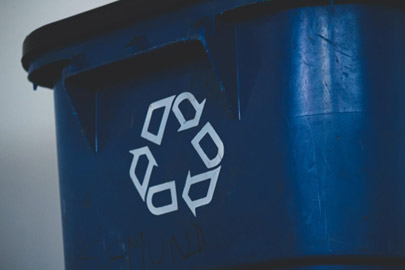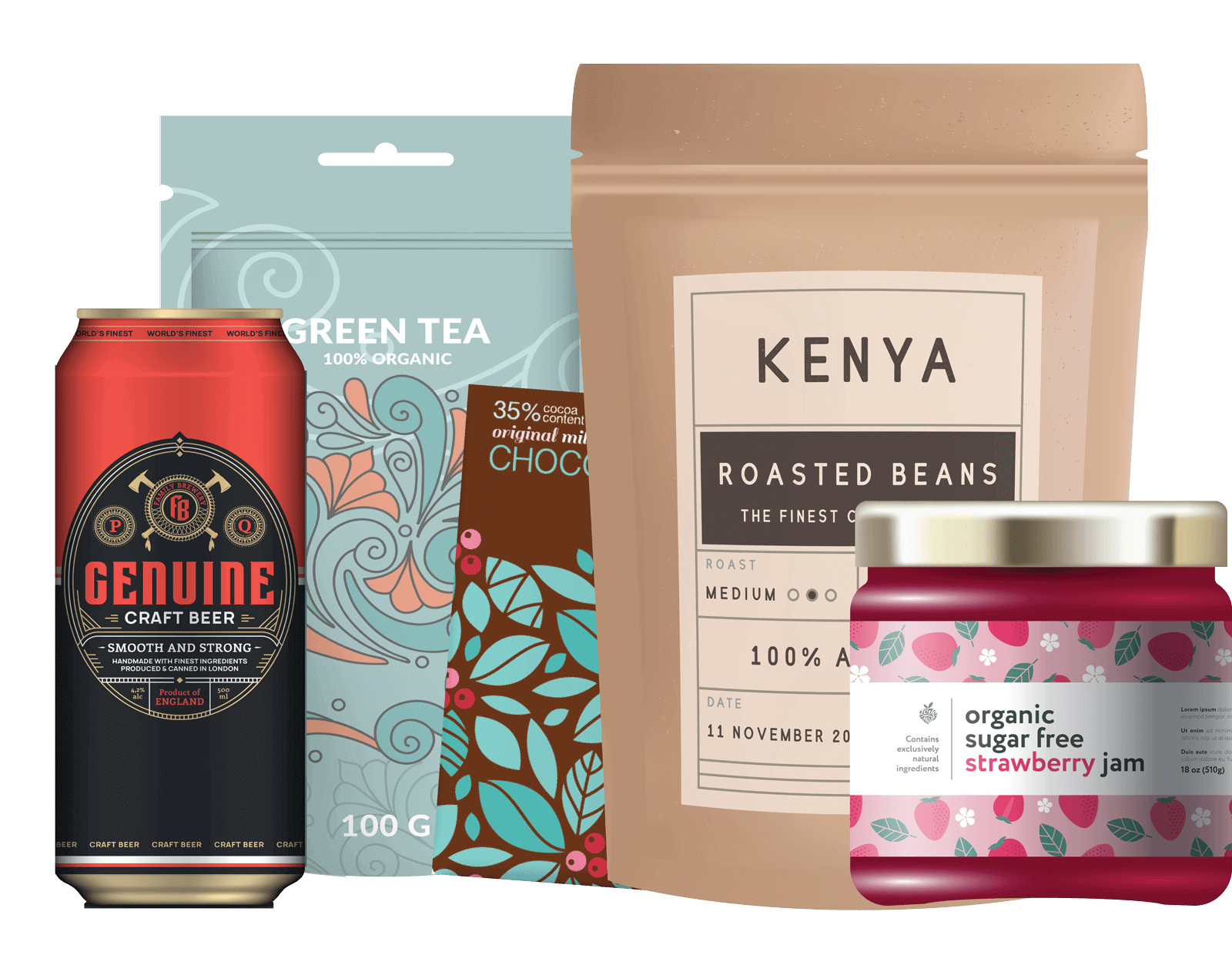Historically, the United States has been a top generator of plastic waste. According to the Environmental Protection Agency (EPA), about 27 million tons of plastic went to landfills in 2018, and less than 9% was recycled.
PET is an excellent material for plastic packaging that can be recycled. This synthetic polymer resin is produced by polymerization, combining two organic compounds: ethylene glycol and terephthalic acid. The resin is extruded or molded into plastic bottles and containers. PET offers many sustainable benefits. It’s 100% recyclable, and one of the most widely recycled plastics globally. PET is a strong and resistant material, which means there is less waste due to breakage. This lightweight material offers you the opportunity to produce fewer greenhouse gases and use less energy and water during production. It’s flexible, strong, and, most importantly, safe, and non-toxic.
Leveraging sustainable packaging solutions continues to be a growing trend. Business owners and decision-makers recognize how this helps meet consumer demand for more eco-friendly products, boosts credibility, and benefits the entire planet. However, many need to be made aware that the color of PET plastic impacts the extent to which it can be sorted and recycled by materials recovery facilities (MRFs). As such, it’s crucial to consider the recyclability of colored PET to avoid greenwashing.
Greenwashing is a deceptive marketing practice wherein a company or organization exaggerates environmentally friendly attributes about its products, services, or overall business practices to create a misleading perception of environmental responsibility. The term “greenwashing” is a portmanteau of “green,” which is often associated with environmentalism, and “whitewashing,” which means to cover up or gloss over undesirable facts.
How PET (Code 1) Recycling Works
Recycling codes for plastics have seven categories, ranging from Code 1 to Code 7. PET is designated as a Code 1 recyclable product. This indicates PET is straightforward to recycle compared to plastics that are difficult or impossible to recycle.
Packaging can be processed using four PET recycling methods:
1. Re-extrusion Recycling: This process happens at the beginning of the PET product lifecycle where products are manufactured. Any uncontaminated scraps are shredded into flakes for reuse in the manufacturing process.
2. Mechanical Recycling: This is the most common form of recycling. Plastic products are washed, dried, flaked, melted, and reprocessed into plastic pellets by extrusion. This process doesn’t change the chemical composition but does affect the molecular weight.
3. Chemical Recycling: This advanced recycling process involves PET polymer being depolymerized to its basic building blocks and repolymerization to a new oligomer. Chemical recycling is particularly useful for contaminated packaging, requiring minimal pretreatment.
4. Energy Recovery Recycling: Energy can be partially recovered from PET plastic by incinerating it in a furnace. Chemical energy is converted into thermal energy, which can be further converted into electricity. Energy recovery works well for packaging that’s heavily contaminated or can’t be recycled by other methods.
When considering the end of your product’s lifecycle, you should think about how packaging contaminants, additives, and colorants could affect its recyclability, and what type of recycling may be best.
PET Packaging Color Preferences
PET packaging offers versatility in accommodating various shapes, sizes, designs, and colors. One of the significant advantages of PET is its ability to create transparent packaging akin to glass. However, it’s important to note that many consumers are drawn to vibrant and colorful packaging options. While these colors enhance the aesthetic appeal, they also introduce challenges for Material Recovery Facilities (MRFs) tasked with the removal, sorting, and processing of recyclable waste materials. The market value of rPET (recycled PET) plays a crucial role in addressing these challenges and promoting sustainable recycling practices.
The Association of Plastic Recyclers (APR) offers guidelines to distinguish between “preferred” and “detrimental” (not preferred) characteristics of rPET colors:
Preferred rPET Colors
- Clear: According to the APR, unpigmented containers and packages are seen as the highest-value rPET recyclables. That’s because clear materials offer a wider variety of applications and are the most cost-effective to recycle.
- Transparent light green: Second in value to clear, transparent light green comprises up to 30% of rPET output. Its value in the marketplace also makes it preferred.
- Transparent light blue: Transparent light blue rPET products are valued because they can offset the yellowing in the clear stream. This can improve the value and quality of clear plastic packaging when used in limited amounts.
Not Preferred (Detrimental) rPET colors
- White and opaque colors: Colorants in a white bottle are most likely inseparable from the resin.
- Transparent colors other than light blue or light green: Other transparent colors outside of green and blue will not be categorized into a high-value stream, and therefore will be sorted for transformation into dark colored fiber or sheet products.
- Dark colors: Dark and black colored PET packaging can’t necessarily be reliably detected using NIR (Near Infrared) sortation. However, advancements in the marketplace have made sortable colorants commercially available, and improved sorting technology now exists. Yet, it’s important to keep in mind that the market for dark rPET colors is limited.
Remember to assess the colorants and additives you would like to include in your PET packaging to avoid a low value rPET product. Contaminants reduce the quality and performance of rPET. Instead of a detrimental PET plastic, consider APR-approved labels designed with recyclability in mind.
Rethinking Recyclable rPET Plastic Packaging
While the popular transparent light green and light blue are on the list of preferred colors, major companies have been rethinking their packaging. For example, Sprite has shifted from green to clear 100% recyclable PET plastic bottles that can be recycled into new bottles. Their shift into the clear recycling stream will result in more output for recycled food-grade packaging.
Find Your PET Plastic Packaging Solution Today
Are you looking for eco-friendly plastic packaging for food and beverage, household, nutraceutical, pharmaceutical, personal care, or beauty products? Consider MJS Packaging as your partner for packaging solutions with sustainability in mind. We have a wide range of PET and rPET with PCR (post-consumer recycled) plastic containers designed to meet various packaging needs. We can help you create packaging that is preferred for improved recyclability.
Contact our knowledgeable packaging solutions specialists with any questions on recyclable packaging projects, or start a project with us.






